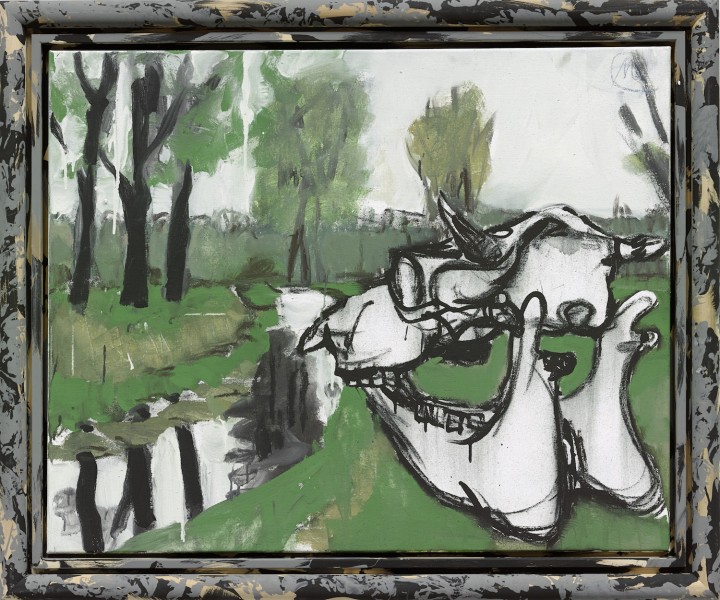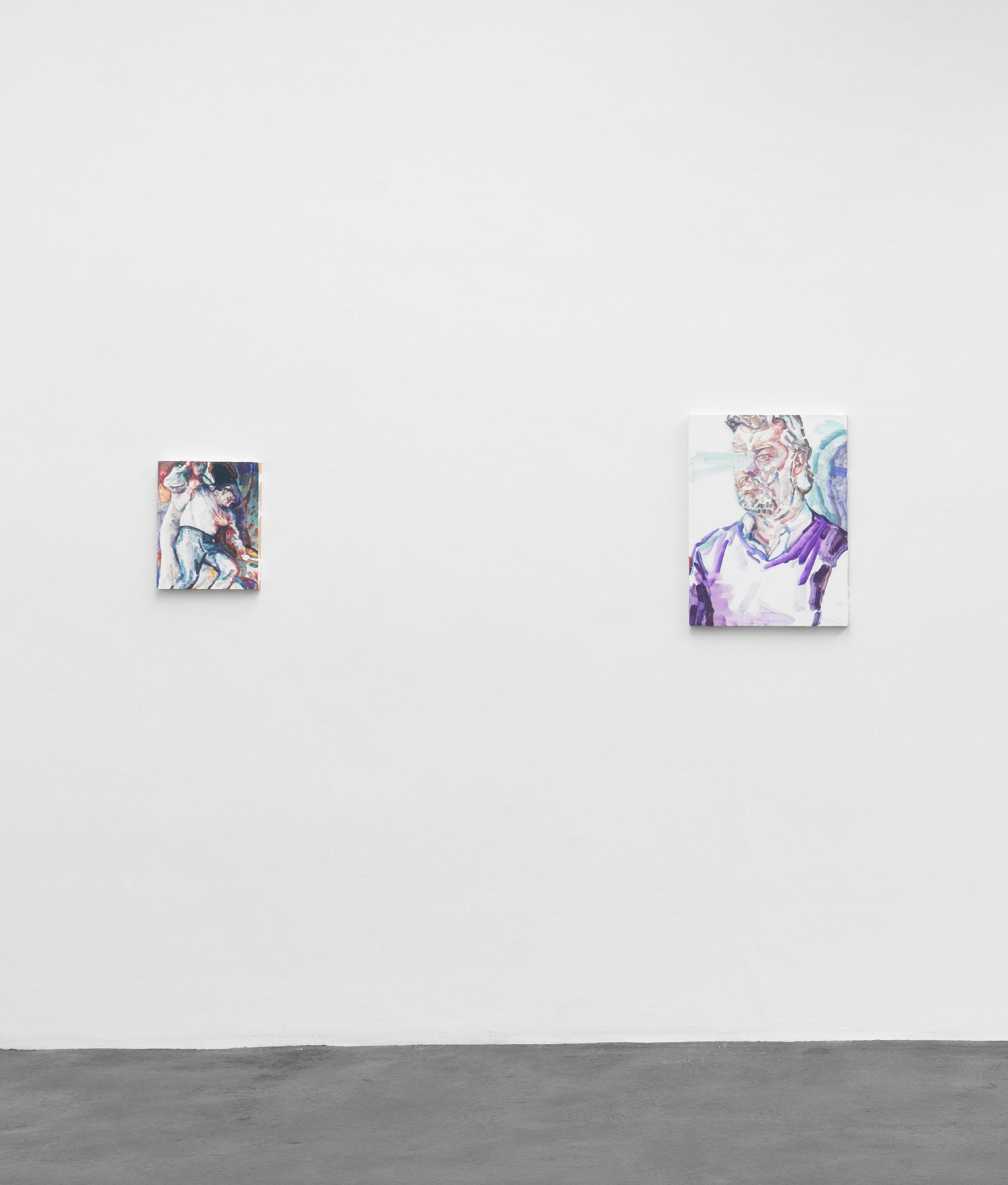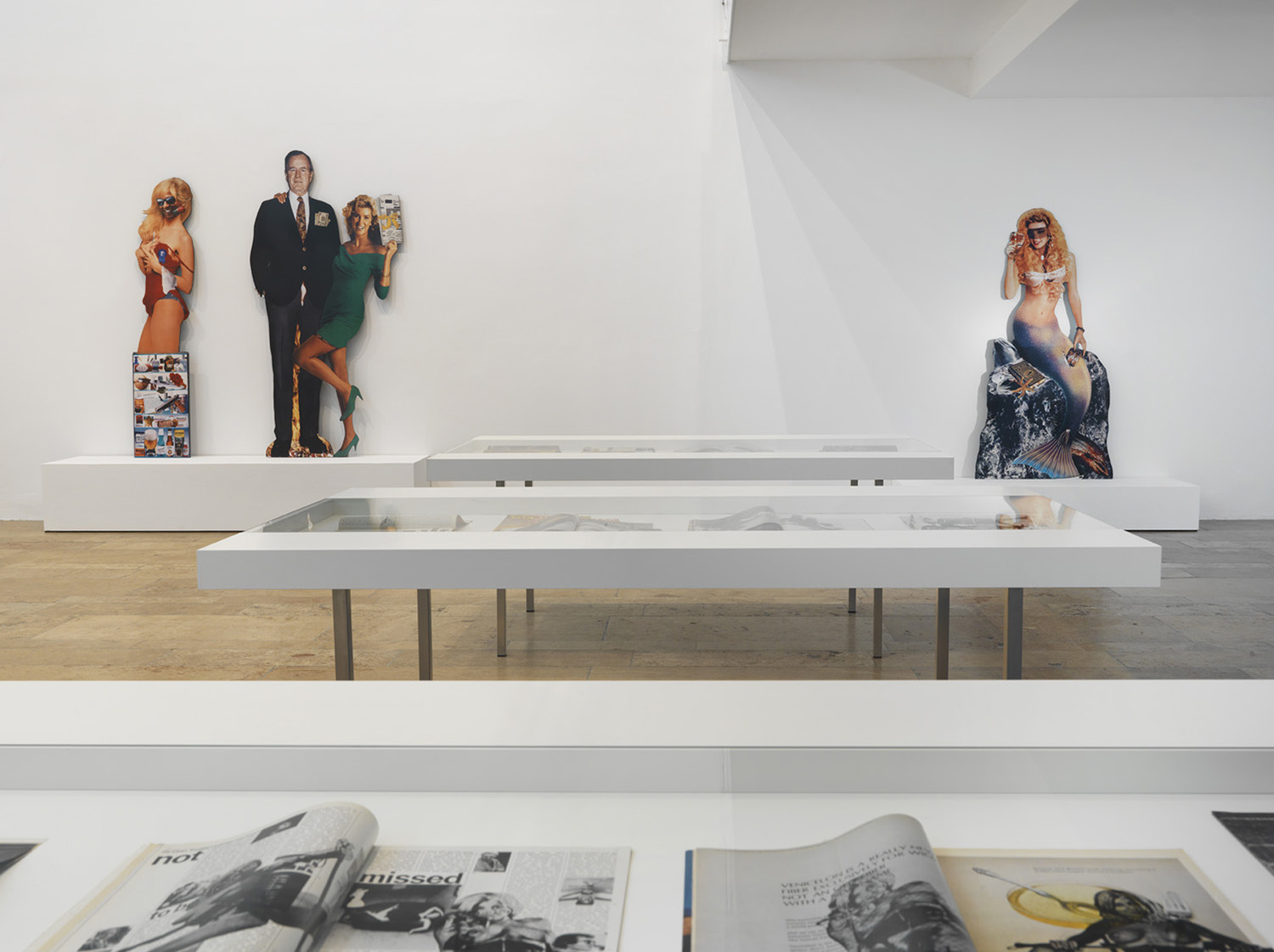German painting of the 1960s, ’70s and ’80s was torn between an ironic relativism (Richter, Polke, Kippenberger, Förg) and an aggressive, categorical figuration (Baselitz, Dahn, Lüpertz). These poles corresponded to attempts to move on from the catastrophic, German mid-20th century by remaining strategically aloof from it, or by brazenly facing it down. The dynamics of Markus Lüpertz’s art showed a similar ambivalence between art-historical allusion and its sublimation into a jagged abstraction, as though following the Freudian pattern of penetrating the past by foregoing all established routes. Blocky sculptures coexisted with forthright, gestural painting, drawing as much from African art — via Picasso’s transmuting of modernism in Les Demoiselles D’Avignon (1907) — as from the scale and physicality of US Abstract Expressionism.
Lüpertz is now in his seventies, and these thirty-five mostly large-scaled works, all dated 2014, appear to have been painted fast and en masse, and not only because of the splashily painted “fine-art” frames that all the works have in common, like a product specification. The exhibition shares a naturalistic palette, and a repertoire of motifs is rotated against landscape backdrops like stage props: classical sculptures, nudes winding drapery around their stout buttocks, animal skulls and minotaurs. The German army helmets, which loomed so threateningly in Lüpertz’s 1970s paintings, sometimes appear, their out-of-placeness emphasized by a slight levitation, as though they had been sloppily collaged out of another context. Lüpertz’s painterly language is either promiscuously referential or helplessly unspecific. In two versions of a nude crouching by pond, one has a Giotto-style face, the other the relatively enlarged eye-and-nose that Picasso liked to give his female sitters.
And yet, across the range of three paintings of figures standing by a bend in a river with their massively hewn backs to us, Lüpertz’s ability to transform traditional inheritances into unforeseeable invention is undiluted. The minotaur of Minotaurus becomes, in Träumer, a more ambiguous, monstrous figure, its horns exchanged for a shock of black brushwork. Foregoing the well-trodden path of allusion, Lüpertz gains access to the troubled unconscious.




